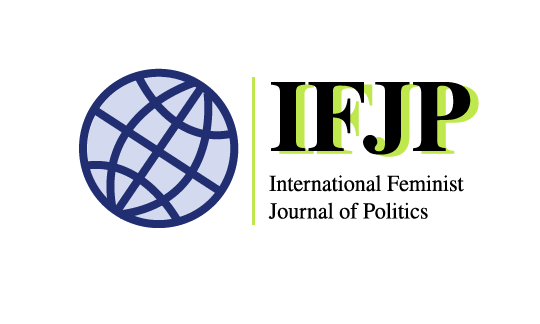The Politics of Gender in UN Security Council Resolutions on Women, Peace and Security
By: Maria Janssonand Maud Eduards
This blog was initially published on IFJP Blog in 2016
The main argument of our article, The politics of gender in the UN Security Council Resolutions on Women, Peace and Security,was that the WPS resolutions allow the appropriation of gender equality to legitimize war. Rereading this article we find it still to be sadly relevant, and that the horrors of war and forced displacement remain an acute problem for many women. After its publication, the vast number of persons seeking refuge in Europe in 2015-2016 highlighted that war and the consequences of war can indeed become global. While also the WPS resolutions are written in a universal language, the implementation of the resolution in Sweden, as in many European countries, indicates that the WPS agenda is primarily perceived as concerning “other” states (Aroussi 2017). Men’s violence against women in Swedish refugee shelters, formally covered by the WPS resolutions, are for instance not addressed in the Swedish 1325 national action plan. In our article, we maintained that the “securitization of gender” in the WPS resolutions implies that war and the consequences of war could be regulated and governed. In their responses to the asylum-seekers from Syria and elsewhere, governments display their belief in the governability of war and the protection of women – although neither abiding by international governing principles nor providing women with protection from men’s violence.
Over the last couple of years, the signs of increasing militarization have been a common lunch-break topic amongst feminist colleagues in political science at Stockholm University. Research results, as well as news reports and political debates have presented several problematic tendencies. First, clearly warring activities tend to be described as “policing” of conflicts rather than armed conflict or war, reported for example by Caroline Holmqvist. Second, results from a master student thesis indicates that the UN Security Council Resolution 1325 has resulted in Swedish aid funding being redirected from gender equality projects to “security” projects. Third, launching its “feminist foreign policy”, the Swedish government defined gender equality, and particularly Resolution 1325, as the route to world peace and the universal liberation of women, (for a discussion about the feminist foreign policy see e.g. Aggestam and Bergman Rosamond 2019, Aggestam, Kronsell and Bergman Rosamond 2019, Bergman Rosamond 2020).
All this worried us since we believe that these are examples of widening the scope of military undertakings while masking it as something else. This increasing militarization can never lead to peace. Besides, we see tendencies that the armed forces and the government appropriate feminism for their own political and nationalist purposes. In other contexts, we have written about how Swedish gender equality polices underpin nationalist ideas. We have also argued that gender equality as nation-branding is detrimental to the creation of policies that make a difference for women.
We also became aware that within certain circles promoting Resolution 1325, armed conflict is even regarded as something positive for gender equality, since it could give rise to change. Our curiosity pertaining to the resolutions on Women, Peace and Security grew: How could ideas about women’s protection from the horrors of war give rise to this kind of militarizing arguments? We were, of course, aware of the feminist critique of the resolutions, that they constructed women as peaceful and beautiful souls, and that they lacked a feminist analysis of gendered power relations. But this didn’t really explain how the resolutions could be used to legitimate war.
Going to the sources – re-reading the body of resolutions initiated since 2000 – we realized that they are constructed along two different trajectories: one dealing with sexual violence and the other with women’s representation. These two trajectories follow different scripts, and are subject to different solutions. We argue that increased participation and representation is a way of gendering security. More women in armed forces as well as in disarmament, demobilization and reintegration processes and peace negotiations serve to highlight women’s conditions and vulnerability in war, and to project gender equality onto the future, the peace to come. However, this process towards gender equality and peace is depicted as conflict-free and void of gender power relations. We maintain that without a broader discussion of power structures, women’s exposed position tend to be seen mainly as a product of war, rather than the result of gender power.
The question of sexual violence follows another pattern, an approach we call securitizing gender. The resolutions regard sexual violence as an illegitimate way of conducting war. Focus is set on punishing the perpetrators. Hence, sexual violence is located in the context of war regulations along with, for example, the ban on chemical weapons. In this way sexual violence is turned into a security matter “proper”. However, this approach turns sexual violence into a question of individual perpetrators, thus denying the structural gender dimensions of sexual violence.
In the end, however, both trajectories are built on the argument that the horrors of wars can be remedied or regulated. The resolutions thus manage to make a connection between regulating and governing war, on the one hand, and the idea of protecting women, on the other. By combining old notions of the protection of women as a sign of being civilized with “modern” ideas of gender equality, the resolutions can be argued to reproduce war as a practice of protection as well as “updating” war into a new, modern and gender equal standard. In our interpretation, the focus on women and peace hides what is actually protected by the resolutions: war and the male soldier.
The problem of using 1325 as a starting point for a feminist security policy is that, accordingly, gender equality, justice and women’s vulnerability are appropriated for violent purposes. The prevailing and unequal gender order is neither noticed, nor problematized. When this is the case, the gender equality rhetoric becomes an appropriation of the feminist project, rather than a step towards emancipation.
Read the full article here: ‘The politics of gender in the UN Security Council resolutions on women, peace and security.‘
Each blog post gives the views of the individual author(s) based on their published IFJP article. All posts published on ifjpglobal.org remain the intellectual property and copyright of the author or authors.
Maria Jansson is Professor of Gender Studies at Örebro University, Sweden. Her research is oriented toward issues of how national and international policies produce and change gender relations and gendered norms pertaining to violence and work and the possibilities for women to give voice to their experiences. Among her recent publications are “Experiencing male dominance in Swedish film production” (co-authored with Louise Wallenberg) In Women in the International Film Industry(edited by S. Liddy, 2020);“An Economy of Protetction: Agency, responsibility and the criminalization of HIV” (Women’s Studies International Forum, 2018); “Gender equality in Swedish film policy: Radical interpretations and ‘unruly’ women”, (European Journal of Women’s Studies, 2017).
.
Maud Eduards is Professor emerita of Political Science at the University of Stockholm. Her research is oriented toward issues pertaining to gender, violence, and women’s organizing, as in Forbidden Act: On Women’s Organizing and Feminist Theory (2002), Body Politics: On Mother Svea and Other Women (2007) and Feminism as Party Politics (2016), three monographs in Swedish. Her recent research focuses on transnational relations, armed conflict and the meaning of security, as in “What Does a Bath Towel Have to Do with Security Policy? Gender Trouble in the Swedish Armed Forces” in Making Gender, Making War: Violence, Military and Peacekeeping Practices (edited by A. Kronsell and E. Svedberg, 2012).




![Maud_Eduards_1[4].jpg](https://images.squarespace-cdn.com/content/v1/5aa1a5545b409b11a50ee5dd/1595253113635-97FL4W2BVUMH7IACXENH/Maud_Eduards_1%5B4%5D.jpg)